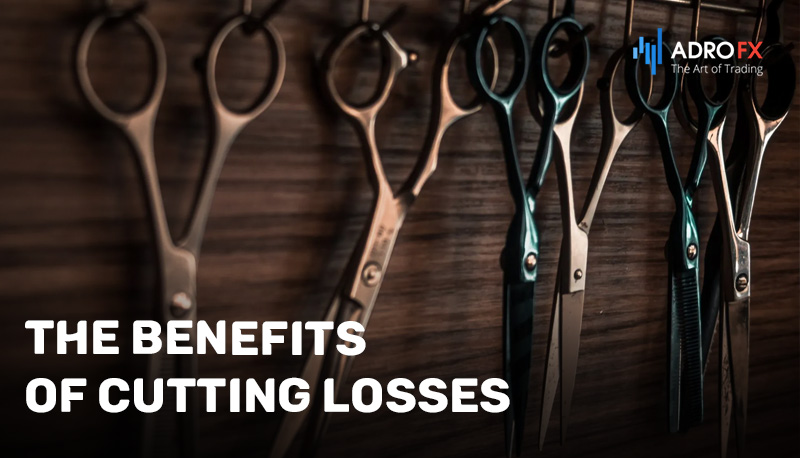How to Cut Losses and Become a Profitable Day Trader

Day trading can be an exhilarating and potentially rewarding endeavor, attracting individuals seeking to profit from short-term market fluctuations. However, like any high-stakes venture, day trading comes with inherent risks, and one of the most crucial skills for a successful day trader is knowing how to cut losses effectively. Embracing the art of minimizing losses while maximizing gains is a fundamental aspect of profitable day trading. In this comprehensive guide, we will delve into the essential strategies and techniques that can empower aspiring day traders to navigate the markets with confidence, minimize potential losses, and pave the way toward becoming a profitable day traders. Whether you're a seasoned investor seeking to refine your approach or a novice trader eager to embark on this exciting journey, the following insights and practical tips will prove invaluable in your pursuit of day trading success.
Why Traders Avoid Cutting Losses
Cutting losses is a critical aspect of successful day trading, yet it is an area where many traders struggle. While the concept of limiting losses to protect capital seems straightforward, the emotional and psychological challenges involved often lead traders to avoid taking this necessary step. Understanding the reasons behind traders' reluctance to cut losses is essential for overcoming these barriers and fostering a profitable day trading journey.
- Fear of Accepting Defeat
One common reason traders avoid cutting losses is the fear of admitting defeat. Watching a trade move into negative territory can be demoralizing, and some traders hold onto losing positions in the hope that the market will eventually turn in their favor. This fear of accepting losses can lead to holding onto losing trades for extended periods, tying up capital and preventing traders from pursuing more favorable opportunities.
- The Gambler's Mentality
Day trading can be exciting, and some traders may develop a gambler's mentality, hoping that a losing position will somehow reverse and yield substantial profits. This mindset can lead to impulsive decision-making and a failure to implement Stop Loss orders, putting traders at greater risk of significant losses.
- Overconfidence in Predictions
Traders who are overconfident in their market predictions may convince themselves that the market will eventually align with their analysis, even in the face of mounting losses. This unwarranted belief in their abilities can blind traders to potential risks, leading to a reluctance to cut losses and preserve capital.
- Attachment to Past Successes
A series of profitable trades can instill a false sense of invincibility in traders. They may become attached to past successes and assume that every trade will yield positive results. Consequently, they may hesitate to cut losses on a trade that deviates from their previous winning streak, leading to greater losses in the long run.
- Lack of Discipline
Day trading demands discipline and adherence to well-defined trading strategies. Traders who lack discipline may find it challenging to cut losses as they deviate from their predetermined plans in the heat of market volatility. Emotional decision-making can override rational judgment, resulting in bigger losses.
- Chasing the Market
Traders who chase the market often enter positions without a clear plan or defined exit points. As trade moves against them, they may convince themselves that the market will reverse shortly, leading them to avoid cutting losses. This reactive approach to trading can quickly erode capital.

The Benefits of Cutting Losses
In the fast-paced and unpredictable world of trading, cutting losses is a strategic approach that can make all the difference between success and failure. Embracing this crucial discipline not only safeguards traders' capital but also provides a host of other significant advantages that contribute to a trader's long-term profitability and emotional well-being. Let's explore the key benefits of cutting losses in trading and why it should be an integral part of every trader's arsenal.
- Capital Preservation
Perhaps the most obvious benefit of cutting losses is capital preservation. By setting and adhering to Stop Loss orders, traders limit the amount they can lose on a single trade. This risk management technique prevents catastrophic losses and allows traders to stay in the game, ready to seize new opportunities when they arise.
- Emotional Control
Trading can evoke powerful emotions, especially when facing losses. By cutting losses at predetermined levels, traders reduce the emotional stress and anxiety associated with watching a trade go sour. Emotional control is essential for making rational decisions and maintaining a clear mindset throughout the trading journey.
- Improved Decision-Making
Cutting losses is part of a well-defined trading plan. When traders stick to their predetermined exit strategies, they cultivate discipline and consistency in decision-making. This enhances their ability to execute trades objectively and reduces impulsive, emotionally-driven actions that can lead to disastrous outcomes.
- Focus on Risk-Reward Ratio
Emphasizing the importance of cutting losses forces traders to consider the risk-reward ratio of each trade carefully. By calculating the potential risk against the expected reward before entering a position, traders can ensure that the odds are in their favor and that losses are limited while potential gains remain favorable.
- Learning Opportunities
Losses are an inevitable part of trading, but they can also be valuable learning experiences. When traders cut losses and analyze the reasons behind them, they gain insights into their trading strategies, identifying areas for improvement and adjusting their approach accordingly. This continuous learning process is crucial for refining skills and staying ahead in the markets.
- Reduced Overtrading
The reluctance to cut losses can lead to overtrading – the act of excessively entering and exiting positions in an attempt to recoup losses. Overtrading often results in higher transaction costs, increased risk exposure, and diminished overall performance. By cutting losses and adhering to disciplined trading plans, traders can avoid falling into the trap of overtrading.
- Enhanced Confidence
Traders who effectively cut losses and manage risk develop a higher level of self-confidence in their trading abilities. Knowing that they have control over potential losses and a well-defined plan in place empowers traders to approach the market with conviction and clarity.

Strategies to Overcome Resistance
The reluctance to cut losses can be a formidable obstacle for traders seeking consistent success in the financial markets. However, by adopting specific strategies to address this resistance, traders can develop the discipline and mental fortitude necessary to effectively cut losses and improve their trading performance. Let's explore some proven strategies that can help traders overcome their aversion to cutting losses and embrace a more prudent approach to risk management.
- Establish Clear Stop Loss Levels
One of the first steps to overcoming resistance is to set clear Stop Loss levels before entering any trade. Establishing predetermined exit points based on a well-defined trading plan ensures that traders are not making impulsive decisions in the heat of the moment. By committing to these Stop Loss levels, traders can protect their capital and avoid the emotional turmoil that comes with holding onto losing positions.
- Embrace a Rational Mindset
Trading can evoke powerful emotions, but it's essential to approach the market with a rational mindset. Traders should focus on probabilities rather than clinging to emotional attachments or past successes. By acknowledging that losses are a natural part of trading and that no strategy is foolproof, traders can better accept the necessity of cutting losses to preserve capital.
- Learn from Losses
Every loss presents an opportunity for growth and learning. Traders should analyze their losing trades objectively to identify potential mistakes, weaknesses in their strategy, or areas for improvement. Embracing losses as valuable learning experiences allows traders to refine their trading approach continually.
- Implement Risk-Reward Ratio Analysis
Before entering a trade, conduct a risk-reward ratio analysis. By calculating the potential risk in relation to the expected reward, traders can ensure that their trades offer favorable risk-reward opportunities. This analytical approach reinforces the importance of cutting losses at predetermined levels to maintain a healthy risk profile.
- Practice Patience
Traders must recognize the difference between minor fluctuations and genuine signals for exiting a trade. Avoid making impulsive decisions based on short-term market movements. Instead, exercise patience and stick to the predetermined Stop Loss levels, even if a trade initially moves against expectations.
- Keep a Trading Journal
Maintaining a trading journal is an invaluable practice for all traders. Recording every trade, along with the rationale behind each decision, provides valuable insights into trading patterns and behaviors. A trading journal can help identify patterns of resistance to cutting losses, allowing traders to work on these challenges and improve their decision-making process.
- Seek Support and Education
Joining trading communities, seeking mentorship, or enrolling in trading education programs can provide valuable support and guidance. Engaging with like-minded traders and experienced professionals can offer fresh perspectives, encouragement, and constructive feedback to help overcome resistance.
Conclusion
Mastering the skill of cutting losses is a vital aspect of becoming a profitable day trader. While it may be challenging to overcome the emotional and psychological barriers that deter traders from cutting losses, the benefits are well worth the effort. By embracing capital preservation, emotional control, and disciplined decision-making, traders can safeguard their funds while enhancing their overall trading performance.
Recognizing the common reasons traders avoid cutting losses, such as fear of defeat and overconfidence, enables traders to address these issues head-on. A rational mindset, a focus on the risk-reward ratio, and a commitment to learning from losses empower traders to make informed and objective decisions.
Implementing strategies to overcome resistance, such as setting clear Stop Loss levels and practicing patience, can substantially improve a trader's ability to cut losses effectively. Keeping a trading journal and seeking support from trading communities contribute to continuous improvement and growth.
Ultimately, day trading success lies in striking the right balance between risk and reward. By diligently implementing the techniques presented in this guide, traders can transform their trading approach, increase their confidence, and pave the way to becoming profitable day traders. Whether one is a seasoned trader refining their strategy or a newcomer venturing into the exciting world of day trading, the journey to profitable trading begins with the conscious effort to master the art of cutting losses.
About AdroFx
Established in 2018, AdroFx is known for its high technology and its ability to deliver high-quality brokerage services in more than 200 countries around the world. AdroFx makes every effort to keep its customers satisfied and to meet all the trading needs of any trader. With the five types of trading accounts, we have all it takes to fit any traders` needs and styles. The company provides access to 115+ trading instruments, including currencies, metals, stocks, and cryptocurrencies, which make it possible to make the most out of trading on the financial markets. Considering all the above, AdroFx is the perfect variant for anyone who doesn't settle for less than the best.










